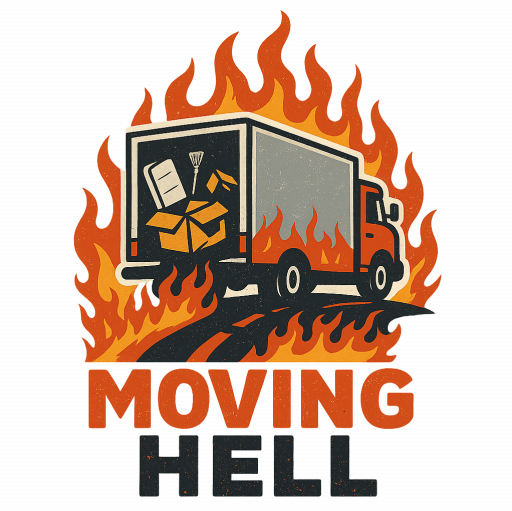📦 How to Calculate Cubic Feet for Moving (Written by Someone Who Barely Survived Their Own Move)
Hi. I’m not a professional mover, or a mathematician, or even particularly organized. But I did survive moving last month with minimal physical injury and only moderate psychological damage. So, if you’re panicking about cubic feet like I did, welcome. Let me show you how I stumbled through it — so maybe you won’t have to cry on a pile of flattened boxes at 3am. (Like I definitely didn’t do.)
📏 What Even Is a Cubic Foot?
A cubic foot is a cube that’s one foot wide, one foot long, and one foot tall. Revolutionary, right? It’s a basic volume measurement. Apparently, movers use it to figure out how much space your stuff will take up in the truck. I, on the other hand, used to think “cubic” just meant “mysterious and important.”
To put it in relatable terms: a toaster is about 1.5 cubic feet. A couch is… significantly more. (Trust me. I tried to measure mine with a bent measuring tape and several emotional breakdowns.)
🧠 The Formula You Can’t Mess Up (Unless You’re Me)
The formula is:
Cubic Feet = Length × Width × HeightSimple, right? Well, I used inches at first. Spoiler: movers don’t like that. You need to convert all dimensions into feet. Which means dividing your inches by 12. Or using Google. Or crying a little and then using Google.
Example: My Faithfully Ugly Couch
- Length: 84 inches → 7 ft
- Width: 36 inches → 3 ft
- Height: 30 inches → 2.5 ft
Multiply: 7 × 3 × 2.5 = 52.5 cubic feet
So yeah, turns out my couch takes up more space than my sense of control over my life. Fun!
📋 The Cheat Sheet I Wish I Had Before My Back Did That Thing
If you, like me, are measuring-challenged and emotionally unstable during moving week, here’s a rough idea of common item sizes:
| Item | Approx. Cubic Feet |
|---|---|
| Medium moving box (stuffed with panic) | 3 – 4 |
| Queen-size mattress (a.k.a. my comfort cocoon) | 60 |
| 3-seater sofa (never cleaned properly) | 50 – 60 |
| Fridge (full of expired condiments) | 35 – 40 |
| Washer (also my therapist now) | 25 – 30 |
📉 Why It Actually Matters (Even Though I Pretended It Didn’t)
- Movers charge by cubic feet. And no, they won’t accept “I have like… some stuff?” as a valid answer.
- If you estimate too low, things won’t fit. If you overestimate, you’re paying for empty space. Which is kinda symbolic, tbh.
- Knowing your volume = fewer surprises on moving day. And believe me, you want zero surprises. I once found a waffle iron in my laundry basket.
🗣️ What I Told the Movers (Eventually)
“I have a couch, a bed, 11 boxes of kitchen stuff I never use, a suspiciously heavy suitcase, and a deep sense of regret. Want me to estimate cubic feet or just cry now?”
They laughed. I think. Maybe out of pity. But at least they brought the right size truck.
📚 TL;DR (Because You’re Probably Packing Right Now)
- Convert inches to feet (divide by 12 and try not to rage quit).
- Use the formula: Length × Width × Height.
- Use the cheat sheet if math makes your brain short-circuit.
- Tell your movers how many cubic feet your life takes up. Be honest. Or close enough.
- Survive the move. Celebrate with pizza. Sleep for a week.
Need a printable checklist? Same. I still have packing tape stuck to my elbow. Leave a comment and I’ll send one before I lose internet again.
